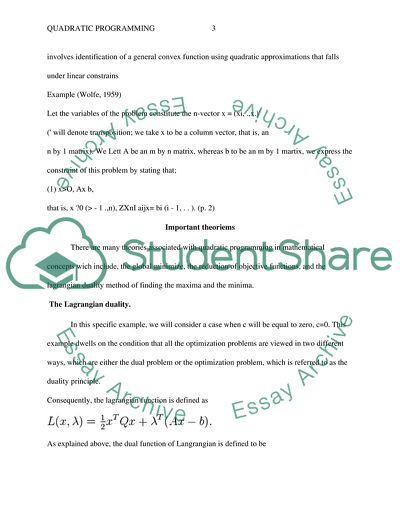Calculation Method for Quadratic Programming Case Study Example | Topics and Well Written Essays - 2250 words. https://studentshare.org/mathematics/1833179-quadaritic-programming
Calculation Method for Quadratic Programming Case Study Example | Topics and Well Written Essays - 2250 Words. https://studentshare.org/mathematics/1833179-quadaritic-programming.


